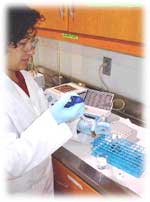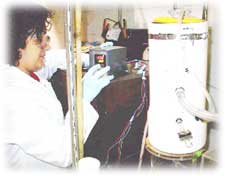However, a serious disadvantage to high-rate anaerobic processes is the subsequent slow start-up of the reactor (re-growth of the microorganisms) following a failure. Reactor failures result from toxic loads. A biological sensor is in development to rapidly detect toxic loads in influent wastewater.
A small-scale (4 L), short-hydraulic retention time (10 min) upflow anaerobic sludge blanket (UASB) reactor, called a Failure-Causing Load Detector (FCLD), was used to test two types of toxic loads: an organic overload and a sodium overload.
Biogas flow rate and pH were monitored during the tests. A fuzzy inference system has been proposed to classify the FCLD operation mode. Biogas flow rate, pH, and change in pH were used as inputs to a simulated fuzzy inference system that classified the mode of operation of the reactor as safe operation, organic overload, or sodium overload. 
The combination of the FCLD and fuzzy logic was able to rapidly detect and identify toxic loads in the influent wastewater.
This research is being extended to explore a wide variety of acute toxins, and to build a fuzzy inference system that will allow the determination of which toxin is causing a problem based upon the output of the biogas and pH sensors.
